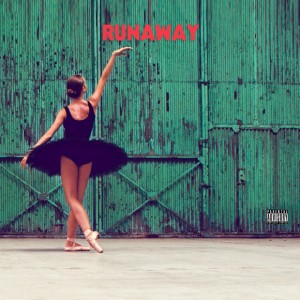What’s the meaning behind Kanye West’s ‘Runaway’?
Kanye West recently commented that his brand of creativity is refined art comparable to Parisian and Italian style – exquisite world-renowned taste of the highest caliber. After viewing his new short film, Runaway, it’s hard to disagree with him. The presentation is brilliant. The cinematography is lush with off whites, florescent reds and polished dark greens. It plays like a long form video with most of the songs from his soon-to-be released My Beautiful Dark Twisted Fantasy serving as the backdrop.
The combination of the lustrous images and absurd storyline, set against auto-tuned harmonies and grand string and horn arrangements from his new songs, conjures a psychedelic viewing experience. It’s tempting to dismiss it as a montage of cool scenes randomly strewn together, but the rich symbolism alludes to some meaning and significance beneath the superficial. At least, let’s hope.
This was true of his Marco Brambilla directed “Power” video, which was essentially a moving portrait of the Freemasonic emblem of the compass and square.
Co-written with famed music video director Hype Williams, Runaway’s plot begins with Kanye’s character Griffin driving his Tatre MTX through a winding road shrouded by a dense forest. His afternoon drive in the country is interrupted by a phoenix falling as a fireball from the sky and causing him to crash while the excellent RZA produced “Dark Twisted Fantasy” plays in the background. He emerges from his vehicle to carry the phoenix (played by Selita Ebanks) away in slow motion while the car explodes behind him.
Replete with wings and meager flesh toned undergarments probably inappropriate for space flight, Selita wakes up on Griffin’s Louis XIV settee. She’s slowly introduced to her new surroundings – news on the television, animals in Griffin’s yard, music from his beat machine – before he takes her out to witness a nighttime parade with a huge effigy of Michael Jackson’s head.
Then, at an all white dinner affair, an anonymous scene-stealing guest actor remarks about Kanye’s, rather Griffin’s, girlfriend, “Did you know she’s a bird?” Griffin immediately grows depressed, and he ensues to serenade a troupe of ballerinas who abruptly appear at the dinner party with the title song “Runaway” – half of which he does while standing atop a piano. Then, when a pheasant is presented before his phoenix girlfriend at the table, she shrieks with horror at seeing her dead brethren displayed on a platter for her consumption.
Finally, after declaring that all statues are phoenixes turned into stone, his girlfriend reveals that she must burn in order to return to her world. Griffin is dismayed. They make love in public at nighttime, and she slips out before dawn (possibly to avoid the awkwardness of barely knowing each other, and being of different species). Griffin awakes to find her ascending back to space, and runs after her through the forest where they first met while the fantastically melancholic “Lost in the World” plays in the background. Gil-Scott Heron lends a poem to the end of the song, and his refrain “Who will survive in America?” is heard repeating as the end of the credits roll.
So what’s to be inferred? Griffin the lonely soul collides with the phoenix. They are destined to meet, she traverses the universe for their paths to cross. She is either his muse or spiritual guide – or both – and is pure and unblemished by this corrupt world. Griffin exposes her to the imperfection of his world, while she fulfills her purpose in revealing certain hidden truths before she ascends back to the heavens.
On one level, the plot serves to comment on the life of pop star Kanye West (relationship with Amber Rose, creative loner, etc). On another, this story is consistent with Egyptian, Greek, Roman and even apocryphal Christian myths, where gods and humans form intimate relationships and are consequently damned. In addition, phoenixes symbolize transformation, rebirth, resurrection and immortality in many ancient belief systems. Kanye, who has grown fond of donning a huge gold chain with the head of Egyptian god Horus around his neck, is apparently aware of such legends.
In 2004, ‘Ye was a new artist who had crafted a raw and masterful soul-sampling record equally Negro Spiritual as it was Hip-Hop. He was a brash and outspoken upstart so insecure about not having finished his undergrad that he dedicated his debut to proving the world he could succeed without it. He was regular and personally relatable – the guy next door – albeit with an enormous ego.
He broke barriers and popularized regular-guy-rap. He appealed to urban and suburban American youth alike (read: blacks and whites). As an audience, we were no longer peeking over the fence at Ghetto America mesmerized by the tragedy and theatrics. Instead, we were trying to make it through college ourselves, equally perplexed and daunted by the common challenges that faced us.
But six years and the transformation is uncanny. So what is Kanye trying to convey? What is the meaning behind his album title, My Beautiful Dark Twisted Fantasy? Why the excessive and purposeful symbolism? Or the frequent references to the devil and Satan in his lyrics? Is this isolated, or part of a larger theme in pop music? Is this the vision of an individual pop artist – a beat machine wielding hip-hop enthusiast from Chicago – or of a team around him?
More questions posed than answered, but it never hurt to once in a while consider, what in the hell (no pun intended) am I looking at?



[...] This post was mentioned on Twitter by Ian and Ian, SWAY Magazine. SWAY Magazine said: What's the meaning behind Kanye West's Runaway? | Sway Magazine http://bit.ly/cbTs9H [...]
Leave your response!